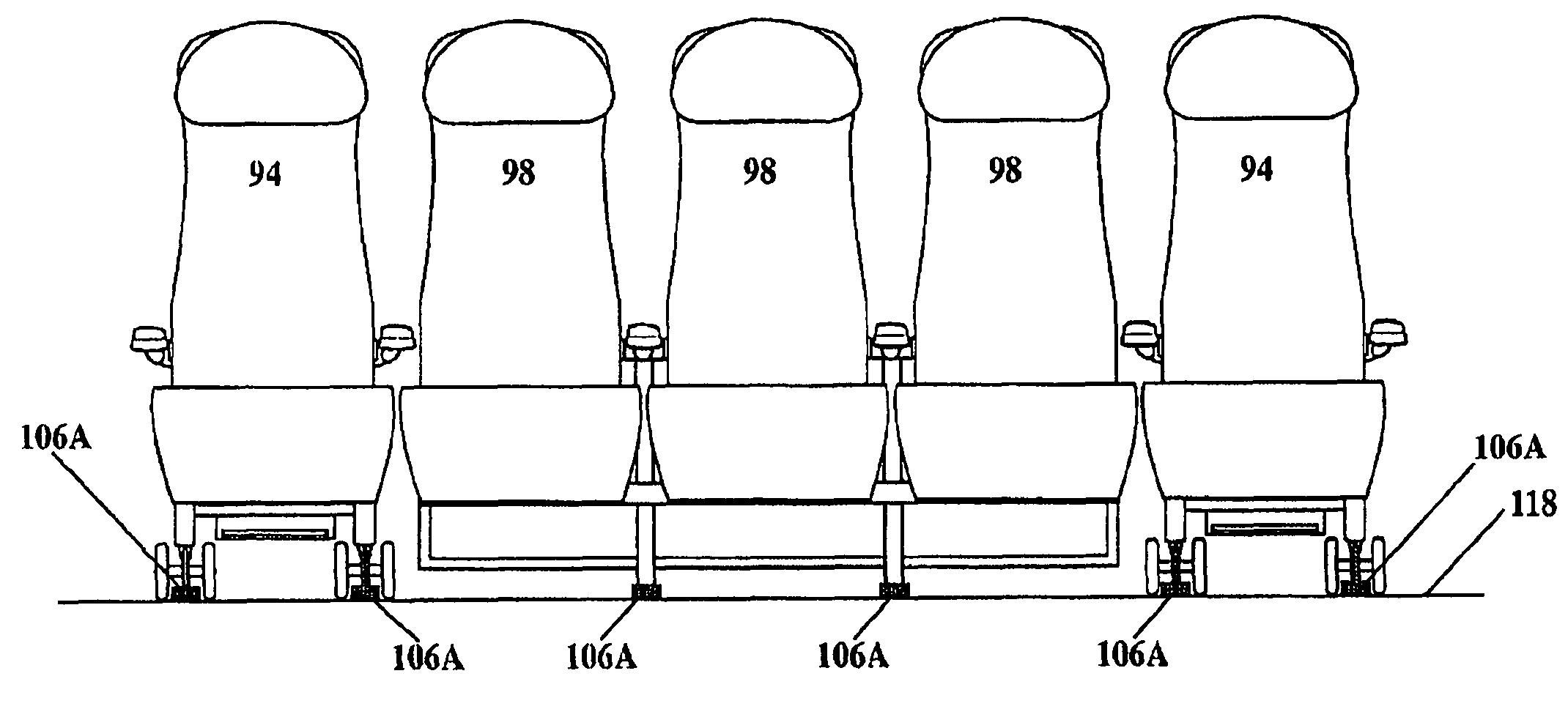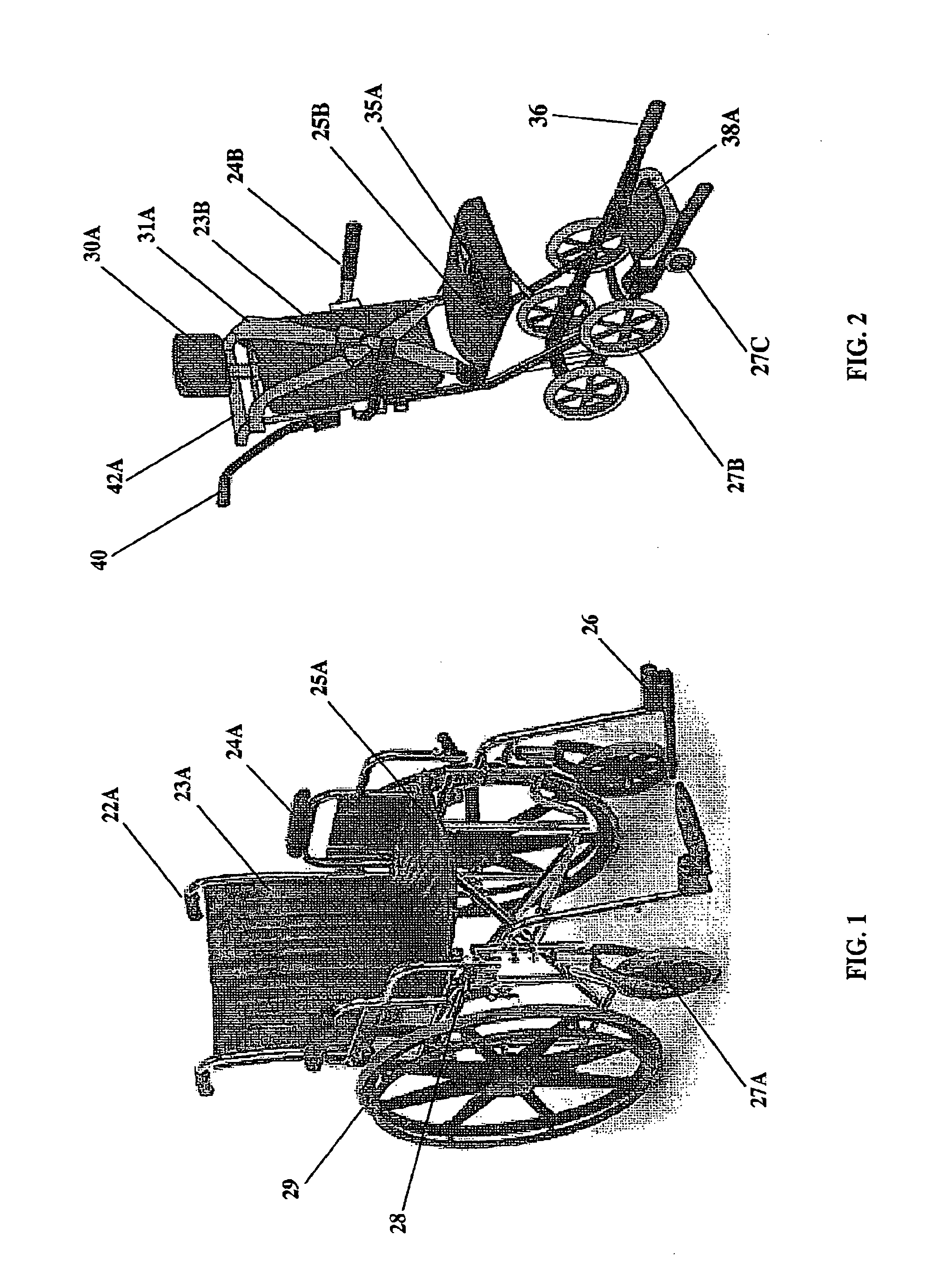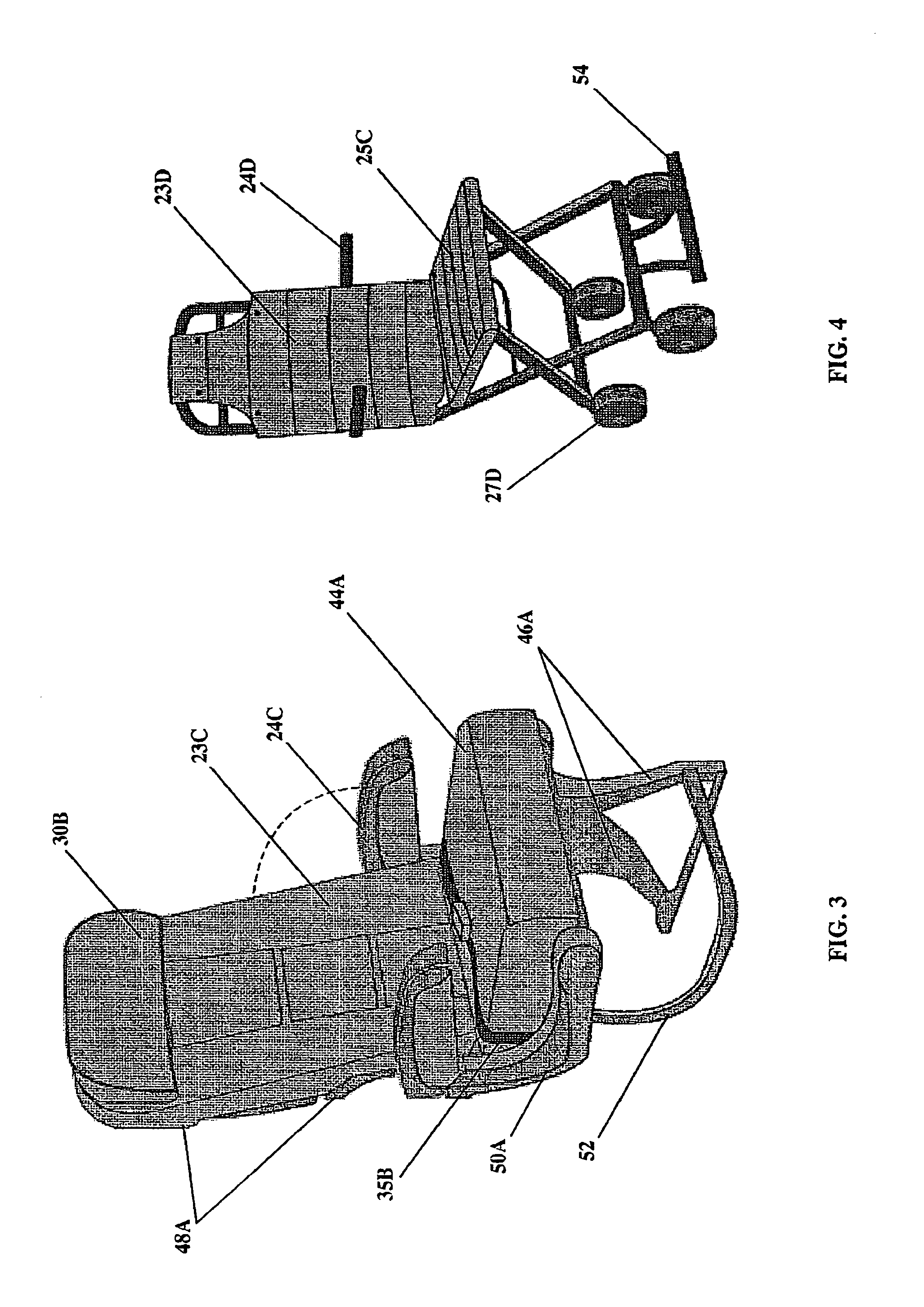System and method for integrating handicapped accessible seats into aircraft interior configurations
a technology for handicapped passengers and aircraft, applied in the field of aeronautical vehicle systems, passenger aircraft seat structures, aircraft seating configurations, etc., can solve the problems of inability to provide unhindered access into and within aircraft, the impact of air travel on the overall comfort of passengers, and the inability to fully fly. , to achieve the effect of reducing the possibility of injury, facilitating concealment, and increasing the overall comfort of air travel for all passengers
- Summary
- Abstract
- Description
- Claims
- Application Information
AI Technical Summary
Benefits of technology
Problems solved by technology
Method used
Image
Examples
first embodiment
[0063]In the invention, track member 120 preferably also has a bracket or track member 132 secured on top of a typical track member 120 or adjacent to a typical track fitting, as shown in FIG. 13, and containing inwardly-extending longitudinal flanges 133 creating gaps 131 shaped complementary to a corresponding mating association plug 140A / B located on the wheel or caster 27E or bottom seat structure 46B of a handicapped accessible seat 94, as shown in FIGS. 15 and 16. Mating association plugs 140A / B corresponding flanges 133 and gaps 131 may be implemented within an aircraft seat 94 and 98 instead of, or in addition to, a shear plug 130A.
[0064]In this embodiment, the handicapped accessible aircraft seat 94 has wheels or casters 27E with a male or female mating association plug 140A located within wheels or casters 27E, as shown in FIG. 15, or mating association plug 140B located within the seat bottom structure 46B, as shown in FIG. 16, and corresponding to a bracket or track memb...
third embodiment
[0070]In a third embodiment, typical track member 120 or elongated base, located in a fore to aft or side to side position within an aircraft and having a flange-like extension running longitudinally thereof and comprising counterbores 124, as discussed hereinabove, is shaped generally complementary to a sheet plug 130A / 130B provided on the leg 126 / bottom seat structure 46A / 46B or wheels or casters 27E of an aircraft seat for positioning in mating association therewith.
[0071]In order to mate with this track member 120, a typical tack-engaging, locking, and / or braking means comprises a bolt, clamping member, control lever 128 as shown in FIG. 12B, and / or along with other advanced intelligent solutions, smart materials, electrical or advanced pneumatic trigger devices, connected to the upper body portion of tack member 120 or within an aircraft seat, wheels or casters 27E or aircraft interior for releasably and fixedly securing and connecting the mating association of sheer plug 130A / ...
PUM
 Login to View More
Login to View More Abstract
Description
Claims
Application Information
 Login to View More
Login to View More - R&D
- Intellectual Property
- Life Sciences
- Materials
- Tech Scout
- Unparalleled Data Quality
- Higher Quality Content
- 60% Fewer Hallucinations
Browse by: Latest US Patents, China's latest patents, Technical Efficacy Thesaurus, Application Domain, Technology Topic, Popular Technical Reports.
© 2025 PatSnap. All rights reserved.Legal|Privacy policy|Modern Slavery Act Transparency Statement|Sitemap|About US| Contact US: help@patsnap.com



